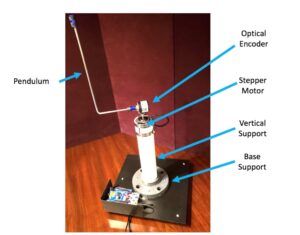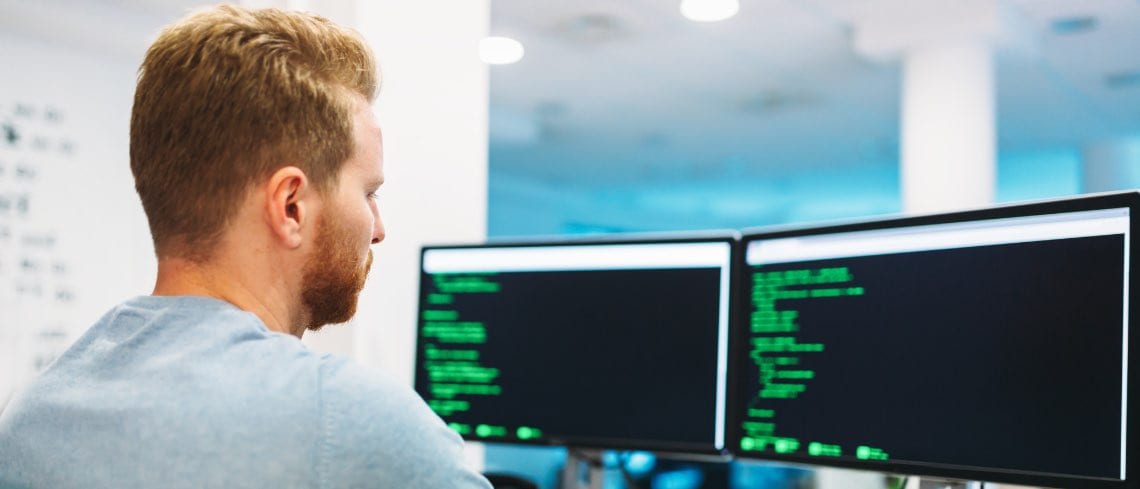In preparation for the American Society for Engineering Education (ASEE) conference that will take place from June 16 to 19 in Tampa, Florida, we will delve into two curricula currently in development by Professor William Kaiser (UCLA) . Readers of The Life.Augmented Blog know him for his Introduction to Embedded Systems with SensorTile, a foundational course anyone can take online to acquire critical knowledge about Arm platforms and even life. He then held the first ever capstone course that used SensorTile modules. He will now introduce a curriculum that builds on the latter with his Technical Session W312 – A New IoT Platform Integrated With Instructional Guidance from Sensing to Machine Learning. Professor Kaiser will also expand his experience to a new subject matter by also presenting a curriculum on control systems in his talk T512A – A Hands-On, Open, Configurable and Low-Cost Platform for Engineering Control Systems Education.
We are sponsoring another talk, T412B Teaching Embedded Systems with Drones, from Professor Yifeng Zhu (University of Maine), the author of a textbook on embedded system in Assembly. He will explain how he uses the STEVAL-DRONE01, which includes our first aircraft controller unit, the STEVAL-FCU001V1, to motivate students. By using some of the ST libraries, the professor can focus on programming registers and offering undergraduates a substantial experience thanks to hands-on labs that cover a wide range of concepts, from sensor filtering and fusion to control strategies and MCU programming. We will delve into this curriculum in a future blog post and explore the various STM32 projects from his students. Today, we decided to focus on the two presentations from Professor Kaiser because they tackle two new challenges: the emergence of machine learning at the edge, and the need for a more modern approach to control systems.
The Emergence of Machine Learning at the Edge
The capstone course is still growing and UCLA expects about 40 projects in 2020. They all use the SensorTile to gather data and a small Linux machine, such as a Beagle Bone, to host the neural network libraries, among other things. However, 2019 is a seminal year because STM32Cube.AI, which we launched in January, now enables the conversion of a pre-trained neural network into code optimized for STM32. And to further hammer the increasing importance of machine learning at the edge, we are also partnering with Cartesiam, a French company that offers libraries performing training and inference operations on the same embedded system. It is thus becoming crucially essential to teach that embedded systems can gather and process information, train models and perform inferences, thus opening the door to entirely new computing paradigms.
The new curriculum from Professor Kaiser and his team started to take shape after Charles Zaloom, a freshman taking his course on embedded systems, independently pursued the development of a complete neural network solution in C that was sufficiently compact and efficient to fit on the SensorTile’s STM32L4 MCU. Not only was this an important technology advance, it also became apparent that SensorTile systems were ideal instructional platforms to rapidly guide students to understand machine learning. Professor Kaiser’s presentation at the ASEE conference on embedded machine learning opens up his experience and knowledge to the community in the hope that it too can take advantage of this novel, open source SensorTile machine learning system. By using autonomous train-and-execution systems, even students without prior computing experience can experiment, learn, and start to grasp the fundamental concepts behind these new applications, thus building strong foundations for their future education and careers.
The Traditional Approach to Control Systems
[pretty-callout align=”right”]Quote
- “Feedback is a central feature of life. The process of feedback governs how we grow, respond to stress and challenge, and regulate factors such as body temperature, blood pressure and cholesterol level. The mechanisms operate at every level, from the interaction of proteins in cells to the interaction of organisms in complex ecologies.” M. B. Hoagland and B. Dodson, The Way Life Works, 1995
The other curriculum Professor Kaiser will introduce at the ASEE conference is all about control systems, which may surprise some attendees, because unlike embedded machine learning, the subject matter is much more common. Every electrical or mechanical engineering degree and other engineering disciplines will include course training in control systems. In their textbook Feedback Systems, Karl Åström and Richard Murray define it as “the use of algorithms and feedback in engineered systems,” which means that they are omnipresent, often unbeknownst to the public benefiting from them. Traditionally, courses tackling this subject matter rely on classic models including examples of operational amplifiers or the cruise control of a vehicle. While these provide an essential theoretical foundation, hands-on experience for students is not frequently available.
The New Approach to Teaching Control Systems

Professor Kaiser is presenting a new curriculum because the increasing popularity of new digital motor actuators for smart vehicles or medical robotics, among others, presents new opportunities, but also new challenges. The demands for higher performance and precision, as well as the imperatives of lower and more efficient power consumption, are pushing engineers to adopt digital solutions. Professor Kaiser applied the X-NUCLEO-IHM01A1 digital motor controller with its L6474 stepper motor driver to create a rotary inverted pendulum platform enabling control systems instruction at all levels. Students now receive direct experience in this critical technology and can then also use our documentation and open source resources to develop many solutions and experiment with advanced motor control systems including those with more than one motor by stacking multiple X-NUCLEO-IHM01A1 boards.
The curriculum has wide applications. Freshmen can become immediately familiar with this hands-on resource, thus enabling instructors to introduce them to control system fundamentals, digital motor control, C code development and STM32 technologies. More advanced students can use MATLAB from MathWorks to configure their motor control applications, perform experiments, and delve into essential design considerations. Senior students can take advantage of the open source resources to develop robust and energy efficient control systems in electrical engineering and mechatronics, or even use this curriculum as a gateway to graduate studies and research. Finally, the ST control systems kit is cost-effective to ensure that all students have full time personal access to the platform at any location.
The Open Curricula and Importance of ASEE
All technical sessions, including the one from Professor Zhu, carry similar objectives: opening these curricula to other establishments and educators to get their feedback and see how they can tailor them to their needs. It’s very easy to overlook the fact that these curricula, just like the Introduction to Embedded Systems with SensorTile, are open courses and both ST and all educators involved want to encourage outside contributions. As Professor Kaiser explains:
“Our goal has been to launch an open community resource that combines state of the art digital actuators and sensors with fundamental control system instruction. The platform capabilities have all depended on the ST digital motor control system and STM32 microcontroller. Now, we wish for everyone to own the platform, its resources, and guide its continued development. Our primary objective is to inform the community, demonstrate the new system, and seek every suggestion from the community of expert control systems instructors. We are hoping to hear instructors’ advice on any new capabilities needed or any new resources required. These are open and configurable platforms, rather than black boxes. The feedback ahead will fuel us to advance all aspects of what we will present at ASEE.”The upcoming conference is thus highly symbolic because it will serve as a launching pad for these three new curricula, but they will also jumpstart a new conversation on how to make machine learning, drones, and control systems relevant for the engineers of tomorrow.
- Learn more about Technical Session W312 – A New IoT Platform Integrated With Instructional Guidance from Sensing to Machine Learning
- Check out the Technical Session T512A – A Hands-On, Open, Configurable and Low-Cost Platform for Engineering Control Systems Education
- Discover the Technical Session T412B – Teaching Embedded Systems with Drones
